Well, last but not least today we went to Lucknow again. This is honestly Sara's first trip to Lucknow where she's actually stopping and having a look around. She's always just drove on through, this time she decided to learn a bit more about the tiny little town and have us learn some more history about the town... there's a little walk around through the farmland so you can learn a bit more about the mining industry...
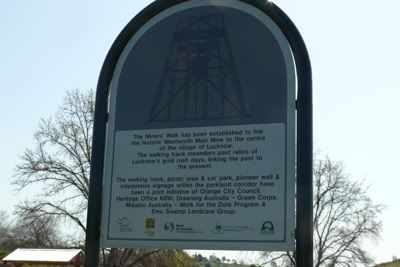
Then of course, first things first we walked over to the giant mine shafts one on each side of the road... here I am in front of them...
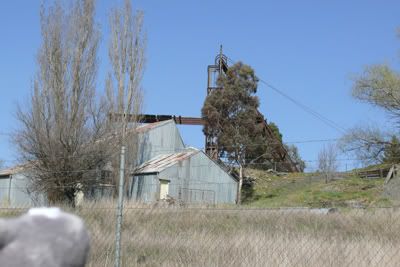
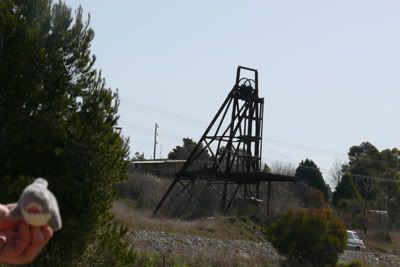
...then we got to learn a bit about the history of Lucknow and the mining that was happening when it was up and running way back in the 1940's...
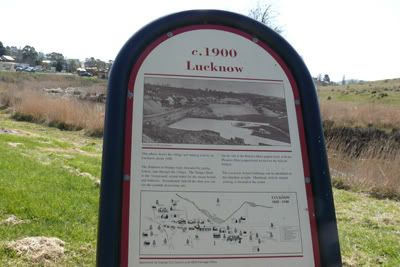
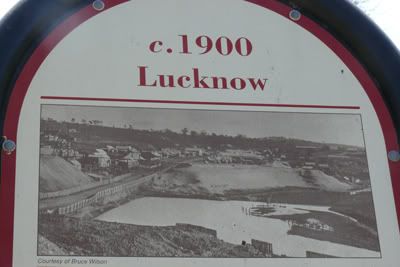
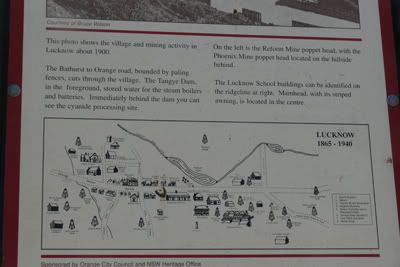
Since the writing on the sign is very small, I'll write out what it says...
The photo shows the village and mining activity in Lucknow about 1900.
The Bathurst to Orange road, bounded by palin fences, cuts through the village. The Tangye Dam, in the foreground, stored water for the stam boilers and batteries. Immediately behind the dam you can see the cyanide processing site. On the let is the Reform Mine poppet head, with the Phoenix Mine poppet head located on the hillside behind.
The Lucknow school buildings can be identified on the ridge line at right. Mamhead, with it's striped awning, is located in the centre.
...and here I am in front of the Tangye Dam that was mentioned in the information that we just read... this actually really surprised Sara since she never thought there was a dam that ran through this town... especially this much since were in such a drought right now, it was quite surprising actually...
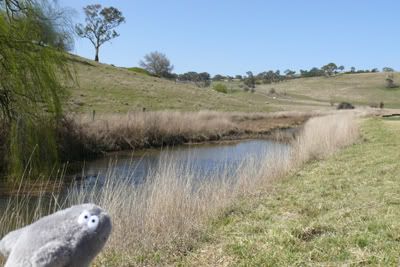
...it was pretty warm today, I was tempted to take a dip in the water, but then decided against it as it probably wasn't as clean as I thought it would be (mainly because of the drought of course).
...almost done with the walk through now (it wasn't too long anyways) here was another information sign... to show you the backdrop of what it looked like where we were here's what it looks like... and now here's the information from the sign...



...again since the writing is quite small I'll type out what the sign reads so you can have a read yourself:
In May 1951, only a few months after Australia's first gold rush started at Ophir, gold was found at present day Lucknow. The Wentworth Goldfield (named after the early land owner WC Wentworth) was initially an alluvial field, but the wealth of the lode lay underground. A comprehensive network of mines was established during the late 1800's, the remnants of the mining operations still dominating the Lucknow village landscape.
During the late 1880's, a series of dams was constructed along Fredericks Valley Creek to provide water storage for the mines. The bluestone walls of these structures are still evident. To the east of Emu Swamp Road, the 'Boat Dam' was constructed and used by the Lucknow village community for recreation. Swimming, rowing and boat regattas were held on the dam.
By the early 1900's the mines had flooded due to the rising water table, and much of the goldfield was abandoned. A resurgence in mining occurred during the 1930's but by the 1940's the boom years of Lucknow and its mines were over. Today Lucknow services the surrounding rural community, its poppet heads and mullock heaps remaining as testimony to the village's historic mining history.
...as you can see there's not much to Lucknow since the mining left in the 40's so a lot of it is just farm land, there are a LOT of sheep... as you see everywhere in Australia - especially since Australia seems to be known for it's sheep and it's wool... we saw a lot of sheep... they all seemed pretty happy! :-) oh, and we even got to see some Australian wood ducks... Sara loves these ducks, she calls them "fancy ducks" because of their brown head...


...well... there's not much more to see in this area, and it was getting quite late and quite warm so we decided to head back to the car... on the way back to the car we stopped and got to see some real aboriginal paintings...
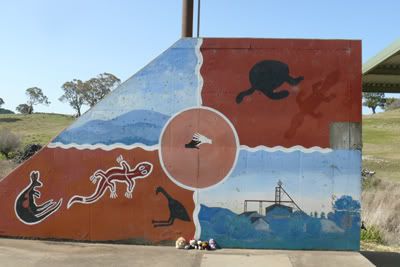

...well I hope you enjoyed my little trek outside of town... I'll post more again soon there's more interesting and historical stuff to learn about rural Australia. :-) Write again soon!



